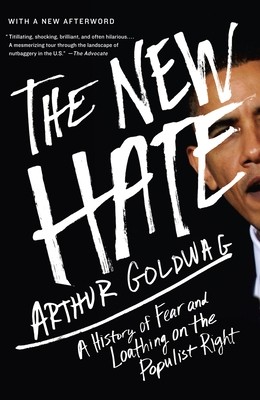
- We will send in 10–14 business days.
- Author: Arthur Goldwag
- Publisher: VINTAGE
- ISBN-10: 0307742512
- ISBN-13: 9780307742513
- Format: 20.3 x 18.8 x 2.1 cm, minkšti viršeliai
- Language: English
- SAVE -10% with code: EXTRA
Reviews
Description
A Kirkus Reviews Best Book of 2012
From the author of -Isms and -Ologies and Cults, Conspiracies, and Secret Societies, here is a deeply researched, fascinating history of the role that organized hatred has played in American politics. The New Hate takes readers on a surprising, often shocking, sometimes bizarrely amusing tour through the swamps of nativism, racism, and paranoia that have long thrived on the American fringe. Arthur Goldwag shows us the parallels between the hysteria about the Illuminati that wracked the new American Republic in the 1790s and the McCarthyism that roiled the 1950s, and he discusses the similarities between the anti-New Deal forces of the 1930s and the Tea Party movement today. He traces Henry Ford's anti-Semitism and the John Birch Society's "Insiders" back to the notorious Protocols of the Elders of Zion, and he relates white supremacist nightmares about racial pollution to nineteenth-century fears of papal plots.
EXTRA 10 % discount with code: EXTRA
The promotion ends in 22d.01:02:11
The discount code is valid when purchasing from 10 €. Discounts do not stack.
- Author: Arthur Goldwag
- Publisher: VINTAGE
- ISBN-10: 0307742512
- ISBN-13: 9780307742513
- Format: 20.3 x 18.8 x 2.1 cm, minkšti viršeliai
- Language: English English
A Kirkus Reviews Best Book of 2012
From the author of -Isms and -Ologies and Cults, Conspiracies, and Secret Societies, here is a deeply researched, fascinating history of the role that organized hatred has played in American politics. The New Hate takes readers on a surprising, often shocking, sometimes bizarrely amusing tour through the swamps of nativism, racism, and paranoia that have long thrived on the American fringe. Arthur Goldwag shows us the parallels between the hysteria about the Illuminati that wracked the new American Republic in the 1790s and the McCarthyism that roiled the 1950s, and he discusses the similarities between the anti-New Deal forces of the 1930s and the Tea Party movement today. He traces Henry Ford's anti-Semitism and the John Birch Society's "Insiders" back to the notorious Protocols of the Elders of Zion, and he relates white supremacist nightmares about racial pollution to nineteenth-century fears of papal plots.


Reviews